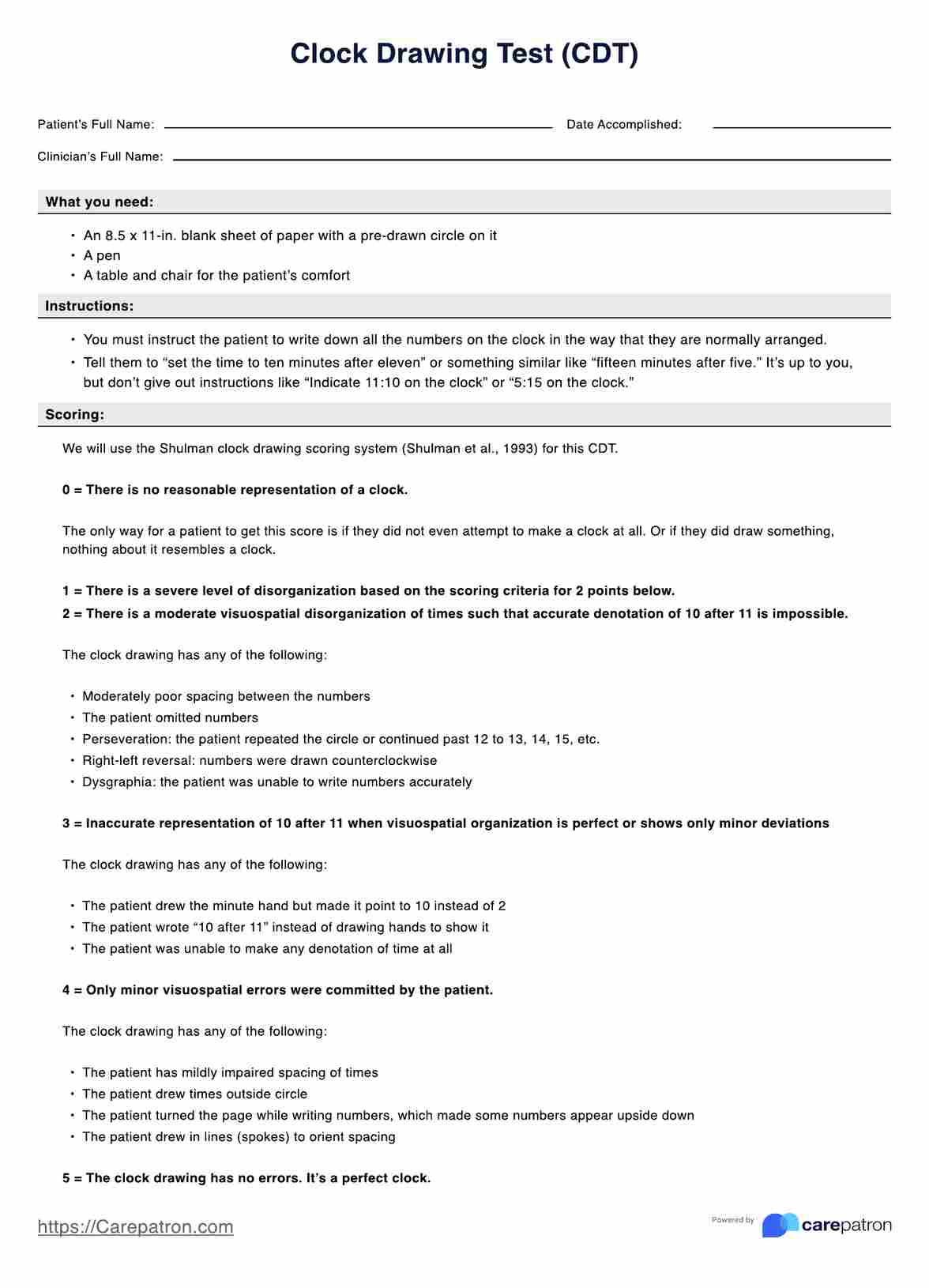Between 1 to 5 minutes. If they are taking longer, you can note that down. It might be a sign that they do have symptoms of cognitive impairment or dementia, but more than the length of time, you should observe if they are following instructions or not as well as how they are drawing the clock.

Clock Drawing Test
If you are dealing with a patient suspected of having symptoms of dementia or cognitive impairment, have them take the Clock Drawing Test to gauge the severity of these symptoms alongside other cognition-related assessments.
Clock Drawing Test Template
Commonly asked questions
Yes. It is a screening tool, so it’s just meant to gauge patients for any symptoms. It cannot be used as a diagnostic tool. It’s still useful since it is normally included in comprehensive examinations. The results of the Clock Drawing Test will serve as valuable information for confirming a diagnosis.
No. The Clock Drawing Test can be used for people aged 18+. Even younger people can develop symptoms of cognitive impairment or decline. However, if the patient has visual or motor impairments, this test may not be suitable for them.
EHR and practice management software
Get started for free
*No credit card required
Free
$0/usd
Unlimited clients
Telehealth
1GB of storage
Client portal text
Automated billing and online payments











